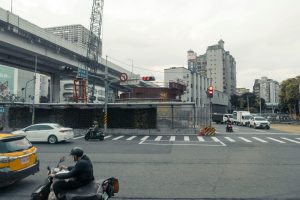Decommissioned Infrastructure: Sleeping in Retired Nuclear Reactors
Decommissioned infrastructure may seem like just a forgotten part of our past, but in the case of retired nuclear reactors, it’s far from being completely retired. These massive structures that once generated incredible amounts of energy now lay dormant, but with a purpose that may surprise you. Instead of being demolished or left to decay, some retired nuclear reactors are finding new life as facilities for sleeping accommodations. From decommissioned submarines to abandoned power plants, these sleeping quarters are proving to be quite popular among adventurous travelers. Let’s take a closer look at this unique trend of repurposing retired nuclear reactors and why it’s becoming a popular option for those seeking a unique and thrilling experience.
The Renewed Purpose of Retired Nuclear Reactors
The process of decommissioning a nuclear reactor can take anywhere from a few years to a few decades, depending on the size and complexity of the facility. Once the shutdown process is complete, which involves removing all radioactive materials and securing the site, many of these structures are simply left behind to be reclaimed by nature. However, in recent years, there has been a shift towards finding new uses for these abandoned sites.
Decommissioned Submarines Turned Hostels
One of the most well-known examples of decommissioned infrastructure being repurposed for sleeping accommodations is the decommissioned Russian submarine “B-413”. This submarine, which served in the Russian Navy from 1968 to 2000, now serves as a unique hostel in the port city of St. Petersburg. Visitors can book a stay aboard this former military vessel and experience what life was like for the crew during its active years.
The Appeal of Sleeping in a Nuclear Submarine
For many travelers, staying on a retired nuclear submarine offers a thrilling experience that they can’t resist. The unique design and history of these submarines, combined with the opportunity to sleep in the same tight quarters as the former crew, is an experience unlike any other. It’s also a chance to learn more about the inner workings of these impressive machines and the role they played in history.
Nuclear Power Plants: From Generating Energy to Hosting Guests
In addition to decommissioned submarines, there are also a few retired nuclear power plants that have found new life as accommodations for travelers. One example is the former “Elmau Nuclear Power Plant” in Germany, which now operates as a luxury hotel. Guests can stay in one of the plant’s turbine halls converted into modern guest rooms, while also enjoying the spa, restaurant, and other facilities on site.
Unique Experiences and Preservation of History
Like the retired submarines turned hostels, staying in a decommissioned nuclear power plant offers a one-of-a-kind experience that appeals to many travelers. But it also serves a larger purpose by preserving these historic structures and preventing them from being demolished. It’s a win-win situation for both travelers and the preservation of history.
Safety and Environmental Concerns Addressed
When it comes to repurposing retired nuclear reactors for sleeping accommodations, safety and environmental concerns are often the first things that come to mind. This is a valid concern, as these structures were designed to contain highly dangerous radioactive materials. However, before being opened to guests, all radioactive materials and equipment are removed and the site is thoroughly decontaminated. Additionally, routine safety checks are conducted to ensure the site remains safe for visitors.
Environmental Benefits of Repurposing Nuclear Reactors
Aside from safety, repurposing retired nuclear reactors also offers environmental benefits. By reusing existing structures, the need for new builds is reduced, which in turn decreases carbon emissions and prevents further destruction of natural habitats. It also contributes to the revitalization of abandoned areas, boosting local economies and bringing new life to communities that have been impacted by the closure of these facilities.
The Future of Decommissioned Infrastructure
The trend of repurposing retired nuclear reactors for sleeping accommodations shows no signs of slowing down. With growing interest from travelers and the environmental benefits it offers, it’s likely we will see more and more of these structures being transformed into unique and unconventional places to stay.
Decommissioned infrastructure, particularly retired nuclear reactors, may have a reputation for being relics of our past, but they are proving to have a renewed purpose. From repurposed submarines to former power plants, these structures are providing travelers with unforgettable experiences, while also contributing to the preservation of history and the environment. The next time you’re planning a trip, consider stepping off the beaten path and spending a night in a retired nuclear reactor.











